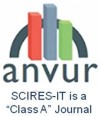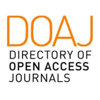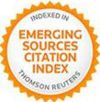Abstract
The long months of social distance to which the pandemic has forced us have certainly accelerated the idea that the re-mediation of the concept of distance in a digital horizon can open up new spaces of negotiation for many social and cultural practices in the future. But it has also, dramatically, highlighted the limits and risks contained in the very idea that the experience of the meta-universe can really do without the mediation of physical reality and human direct intervention. The reflections and design experience proposed here therefore aim to reflect on the role that the new technologies and traditional professionals are playing in relation with the phygital cultural experience. The idea of the contemporary museum is indagated, questioning, however, the quality of the 'relationship' between the work of art and the user and the ways in which design can respond creatively to the demand for cultural consumption by activating new processes of attribution of meaning.
Keywords
Full Text:
PDFDOI: http://dx.doi.org/10.2423/i22394303v12n1p133
References
Affede, A. (2011). Orientamenti e prospettive della mediazione narrativa, in L. Cataldo (Ed.), Dal museum theatre al digital storytelling. Nuove forme della comunicazione museale fra teatro, multimedialità e narrazione. Milano: Franco Angeli.
Bekele, M. K., Pierdicca, R., Frontoni, E., Malinverni, E. S., & Gain, J. (2018). A Survey of Augmented, Virtual, and Mixed Reality for Cultural Heritage. Journal on Computing and Cultural Heritage (JOCCH), 11(2), 7.
Bekhtereva, V., & Müller, M. M. (2017). Bringing color to emotion: The influence of color on attentional bias to briefly presented emotional images. Cognitive, Affective, & Behavioral Neuroscience, 1028–1047.
Benjamin, W. (1936). L’opera d’arte nell’epoca della sua riproducibilità tecnica (2000), tr. it. di E. Filippini. Torino: Einaudi.
Bolognini, N. (2015). Causal mechanisms of mirror-touch synesthesia: Clues from neuropsychology. Cognitive neuroscience, 6(2-3), 137-139.
Bolter, J. D. Grusin, R. (2003). Remediation. Competizione e integrazione tra media vecchi e nuovi. Milano: Guerini e Associati.
Brown, T. (2008). Design thinking. Harvard business review, 86(6), 84-92.
Casetti, F. (2020) Close-up-ness. Masks, Screens, and Cells, img journal, 3, 104-117.
Chatterjee, A., & Vartanian, O. (2016). Neuroscience of aesthetics. Annals of the New York Academy of Science - Special Issue: The Year in Cognitive Neuroscience, 1369(1), 172-194.
Chen, S., & Gordon, J., & Ouni, A., Sahmoud, H., Shapley, R. & Xing, D. (2015). Brightness – Color Interactions in Human Early Visual Cortex. Journal of Neuroscience, 35(5), 2226-2232.
Ciancia, M. (2016). Transmedia Design Framework. Un approccio design-oriented alla Transmedia Practice, Milano: Franco Angeli.
Cirafici A. Maniello. D. Amoretti V. (2015). Block NXLVI_Parthenon_Nord Frieze. Augmented Reality. The magnificient adventure of a ‘fragment’. SCIentific RESearch and Information Technology, 5 (2), 129-142.
Cirafici, A., Amoretti, V., Di Fratta, V., Di Natale, I., Lallone, D., & L. Mascia, (2014). Tell me a story. New emotional and cognitive strategies to communicate and valorise the Cultural Heritage. In Campanella, L. & C. Piccioli, (Eds.). Proceeding of Vth International Conference in Diagnosis for the Conservation and Valorization of Cultural Heritage (pp. 67-70). Rome: Aracne editrice.
Falk, J. H., & Dierking, L. D. (2018). Learning from museums. Rowman & Littlefield.
Finkelstein, A., Las, L., & Ulanovsky, N. (2016). 3-D maps and compasses in the brain. Annual review of neuroscience, 39, 171-196.
Freedberg, D. (2009). Il potere delle immagini. Il mondo delle figure: reazioni e emozioni del pubblico, Torino: Einaudi.
Gambino, C. (2021). Covid-19 e turismo in Italia: dagli effetti devastanti della pandemia alla politica di rilancio per un settore strategico. Documenti geografici, (2), 105-119.
Giacomin, J. (2014). What is human centred design? The Design Journal, 17(4), 606-623.
Gregory, R. L. (2001). Hands-on science. Education for the Twenty-First Century. Retrieved from http://citeseerx.ist.psu.edu/viewdoc/download?doi=10.1.1.1064.6549&rep=rep1&type=pdf.
Holtzblatt, K., Wendell, J. B., & Wood, S. (2004). Rapid contextual design: a how-to guide to key techniques for user-centered design. Amsterdam: Elsevier.
Hooper-Greenhill, E. (2013). Museums and their visitors. Routledge.
Ippoliti, E., Meschini A. (2011). Tecnologie per la comunicazione del patrimonio culturale, Disegnare_Con, 6 (4), 1-1.
Jacobsen, T. (2018). Neuroaesthetics and the Psychology of Aesthetics. Neuroaesthetics. 27-42. Routledge.
Kouprie, M., & Visser, F. S. (2009). A framework for empathy in design: stepping into and out of the user's life. Journal of Engineering Design, 20(5), 437-448.
Langella, C. (2018). Augmented Reality Implementation in Cultural Heritage for Emotional Experiences. The Case of CHEESE. PAD Pages on Arts & Design, 15, 93-118.
MacLeod, S., Dodd, J., & Duncan, T. (2015). New museum design cultures: harnessing the potential of design and ‘design thinking’ in museums. Museum Management and Curatorship, 30(4), 314-341.
Milgram, P., & Kishino, F. (1994). A taxonomy of mixed reality visual displays. IEICE TRANSACTIONS on Information and Systems, 77(12), 1321-1329.
Mitchell, W.J.T. (2018). Scienza delle immagini. Iconologia, cultura visuale ed estetica dei media, Cremona: Jhon & Levi editore.
Norman, D. A. (2013). Emotional Design: Why We Love (or Hate) Everyday Things, New York: Basic Book.
Onians, J. (2018). Art, the visual imagination and neuroscience: The Chauvet Cave, Mona Lisa's smile and Michelangelo's terribilitá. Retrieved from https://pubmed.ncbi.nlm.nih.gov/
Pasquinelli, E. (2012). Neuromyths: Why do they exist and persist?. Mind, Brain, and Education, 6(2), 89-96.
Pedersen, I., Gale, N., Mirza-Babaei P., & Reid S. (2017), More than Meets the Eye: The Benefits of Augmented Reality and Holographic Displays for Digital Cultural Heritage, Journal on Computing and Cultural Heritage, 10(2), p. 11.
Ronga, I. (2014), Multimodalità del sistema nervoso, AlphEx.
Rouse, R., Engberg, M., JafariNaimi, N., Bolter J. (2015), MRx: An Interdisciplinary Framework for Mixed Reality Experience Design and Criticism, Digital Creativity, 26 (3-4), 81-87.
Sanders, E. B. N. (2003). From user-centered to participatory design approaches. Design and the social sciences. CRC Press, 18-25.
Shah, N. F. M. N., & Ghazali, M. (2018), A Systematic Review on Digital Technology for Enhancing User Experience in Museums, In International Conference on User Science and Engineering (pp. 35-46), Springer.
Silva, M., & Teixeira, L. (2021, December). eXtended Reality (XR) Experiences in Museums for Cultural Heritage: A Systematic Review. In International Conference on Intelligent Technologies for Interactive Entertainment (pp. 58-79). Springer, Cham.
Treleani, M. Zucconi, F. (2020). IMG journal. Remediating distances, 2020.
Visser, F. S., Stappers, P. J., Van der Lugt, R., & Sanders, E. B. (2005). Contextmapping: experiences from practice. CoDesign, 1(2), 119-149.
Vitale, G. (2013). Design di Sistema per le istituzioni museali. Il Museo Empatico, Bologna: Zani.
Article Metrics
Metrics powered by PLOS ALM
Refbacks
- There are currently no refbacks.
Copyright (c) 2022 Alessandra Cirafici

This work is licensed under a Creative Commons Attribution-NonCommercial-NoDerivatives 4.0 International License.
SCIRES-IT, e-ISSN 2239-4303
Journal founded by Virginia Valzano






